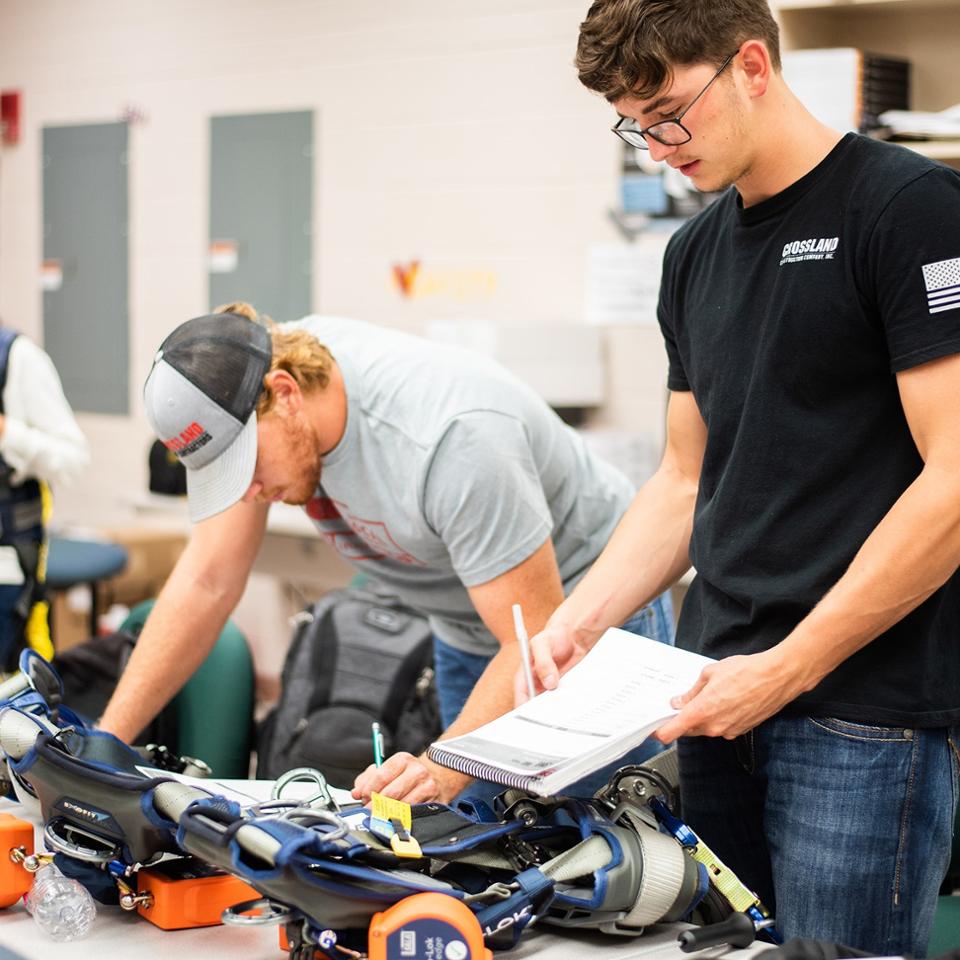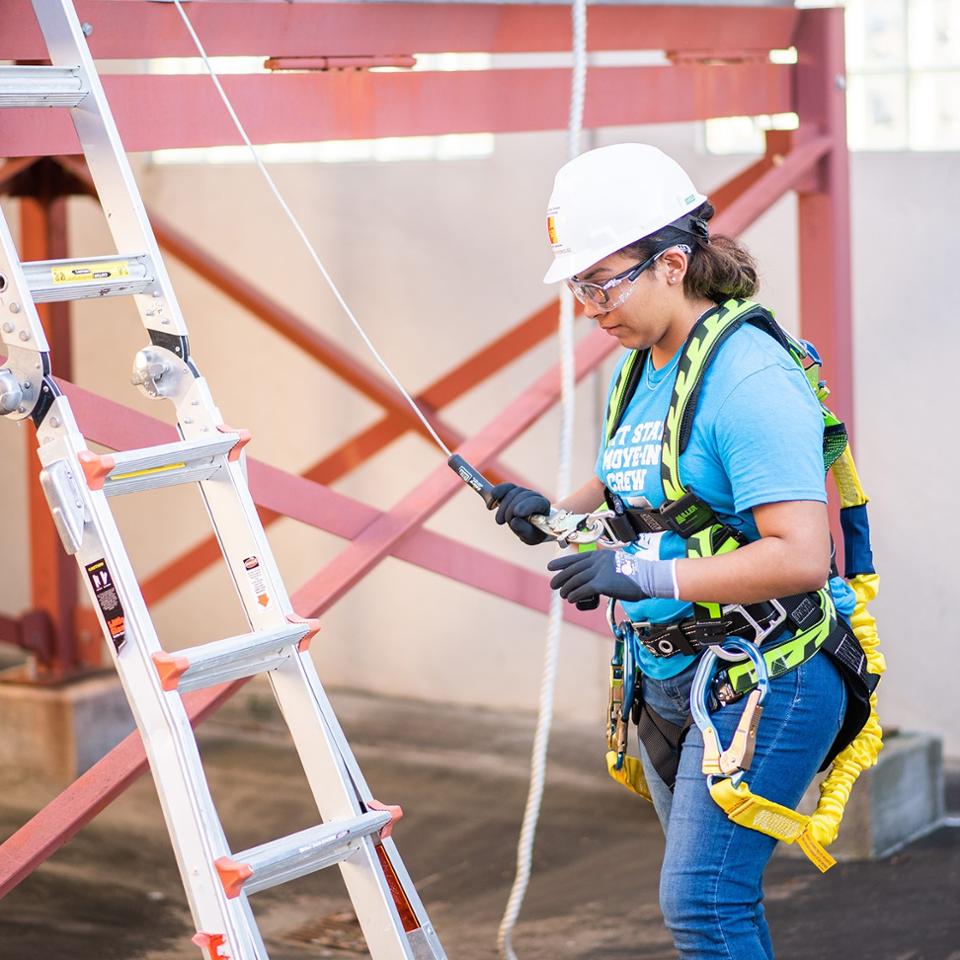Safety Management
Major in Construction Management with an Emphasis in Safety ManagementAssure safe conditions for workers at a job site.
Through this emphasis track, learn how to identify hazards and manage risks of construction projects. Students learn how to react to incidents and create proactive safety procedures.
Apply safety guidelines when working at heights, handling hazardous materials, or using heavy machinery. Safety management students become familiar with different safety tools, its purpose, and proper usage.

Gain expertise in selecting and utilizing Personal Protective Equipment (PPE) essential for construction projects.

Identify potential hazards, evaluate safety measures in place, and suggest improvements within simulated work environments.

Practice executing emergency response plans, including evacuation procedures and first aid.
Topics unique to the Safety Management emphasis track include:
- Risk Assessment: Analyze potential hazards to identify and mitigate risks in construction projects proactively.
- Safety Management: Develop strategies to ensure the well-being of personnel and compliance with safety protocols on construction sites.
- Fire Safety: Implement fire prevention measures, emergency response plans, and safety protocols to protect construction sites from fire hazards.
- Basic Electrical Safety: Ensure a safe working environment by implementing electrical safety practices in construction settings.
- Industrial Hygiene: Manage a healthy workplace by addressing factors such as air quality, noise levels, and ergonomic considerations within the construction industry.
- Hazardous Materials: Identify, handle, and dispose of hazardous materials in compliance with safety regulations to protect workers and the environment.
- Legal Issues in Environmental Health and Safety: Examine legal and regulatory frameworks in construction industry safety, focusing on compliance and risk mitigation.
Safety Management graduates are recruited to become safety managers at:
- Construction Sites: Oversee hazard assessments, enforce safety protocols, and conduct regular site inspections to ensure compliance with safety standards.
- Manufacturing Facilities: Implement safety training programs, monitor equipment operation, and establish emergency response plans to maintain a secure working environment.
- Warehouses: Conduct safety audits, manage material handling procedures, and enforce proper storage practices to minimize workplace accidents and injuries.
Safety managers train all supervising employees on the proper safety procedures and hazard prevention. In this leadership role, investigate and study past incidents to improve employee safety.
Graduates create manuals, report incidents, and document changes. They also inspect equipment and observe the workplace to ensure all rules are followed.
Additional information
Construction Management - Safety Management Degree Map download